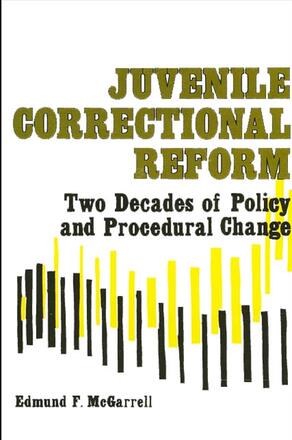
Juvenile Correctional Reform
Two Decades of Policy and Procedural Change
Alternative formats available from:
Description
This book addresses the divergent reform agendas that have shaped American juvenile justice systems during the last two decades. Testing and extending the theory of social reform developed by Ohlin, et al. in their study of Massachusetts' juvenile justice reform, McGarrell investigates the process of change in New York State's juvenile corrections system because this state was a forerunner of both liberal and conservative national reform trends. He asks: "What juvenile justice policies have changed? Who has changed them, and why? What has been the effect on juvenile corrections, and ultimately, on youth?"
Juvenile Correctional Reform suggests that many factors—as broad as cultural shifts in prevailing political ideology, and as narrow as the individual initiative of an agency head—have shaped policy and procedure at specific times. It also provides an important case study of an organization in relation to its environment during a period of unprecedented and often contradictory demands for change in juvenile corrections.
Edmund F. McGarrell is Assistant Professor in the Criminal Justice Department at Indiana University. He co-edited the 1984 and 1985 editions of the Sourcebook of Criminal Justice Statistics.
Reviews
"There is a long-standing interest in criminal and juvenile justice with organizational change, and this work builds upon that theory. It is well-written and has a good, logical flow. The description of the case study is qualitatively rich, and the analysis is sophisticated." — Robert B. Coates, University of Utah